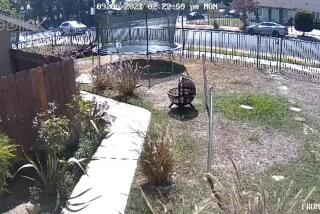Mechanic Reveals Garage Scams
- Share via
He’s worked for service stations, department stores, quick stops, tire and muffler shops, dealerships, distributors, and privately owned auto repair facilities--both foreign and domestic.
And if there’s one thing Chris H. Stevenson of Huntington Beach learned during his 12 years as a professional mechanic, service writer and service manager, it’s this: Although the tactics used in each shop differ, “the general consensus has always been to sell you as much as possible, with whatever means possible.”
It’s with that in mind that Stevenson has written “Auto Repair Shams and Scams: How to Avoid Getting Ripped Off” (Price Stern Sloan; $9.95), an insider’s view of how the auto repair industry really works.
As Stevenson sees it, “Auto Repair Shams and Scams” is “the crucifix held in the face of Dracula auto repair.
“This is dirty laundry being revealed like it never has--the tactics, the lingo, the tricks, the parts and services oversold, the personalities, education and attitudes of the staff, and any other area in the auto repair industry that has boggled, confused or disheartened you.”
Written for the layman, the paperback guidebook covers everything from how to protect yourself from unfair charges and repairs to how to deal with mechanics.
In a chapter on choosing the best garage, Stevenson details the advantages and disadvantages of having repairs done at service stations and other types of automotive repair outlets, along with appropriate cautionary notes: “Many (car) dealerships don’t do engine machine work. Although they offer this service, it can be ‘farmed out’ to a special facility. . . . The result is a costly charge. Your best bet is to find a dealership that has its own in-house machine shop facility.”
The book also serves as a reference manual, with Stevenson focusing on common repair services--L.O.F. (lube, oil, filter), tires, exhaust systems, brakes, the front end, electrical system, tuneups and smog checks--and showing how the job should be done and which parts tend to be oversold.
He concludes with a chapter on tips to save money, and what to do when you’ve been ripped off.
And just how extensive are auto repair rip-offs?
“I’d say it’s a terrible problem, probably the worst I’ve seen in any occupation you can think of,” Stevenson, 38, said in an interview. “I think there’s a great wool blanket pulled over the eyes of the American public.”
There’s no question auto repair is a big business. The owners of America’s 181 million registered cars spend more than $70 billion annually to maintain and repair them.
According to a 10-year-old U.S. Department of Transportation study of the auto repair industry, about 40% of the costs associated with auto repair are unnecessary.
The reasons include unneeded parts in package deals, faulty repairs, unnecessary preventive maintenance, unneeded repairs sold with possible fraudulent intent, and accidents due to faulty repairs.
All that adds up to an annual consumer loss of $20 billion.
Says consumer advocate Ralph Nader in his foreword to “Auto Repair Shams and Scams”:
“Today, the figure for these consumer losses has increased to approximately $40 billion a year. There is a little evidence that the auto repair industry has cleaned up its act.”
The information provided in “Auto Repair Shams and Scams” is, according to Nader, “a perfect antidote for the . . . ‘take me, I’m yours, attitude.’ ”
Stevenson said several factors prompted him to write the book.
“It’s my contention that it’s not necessarily a greedy person, it is the way most mechanics are paid that determines your bill. Most dealerships and gas stations have one thing in common: a bonus and commission system,” in which mechanics earn extra money on parts and services they sell above a certain quota.
“I think that is the absolute ruin of the industry and has been so detrimental to the customer,” said Stevenson. Gas stations notoriously work on a 40-20 deal, he added, in which the mechanic gets 40% of the labor he sells and 20% of the parts.
“The faster they go, the more parts they sell. It’s better for them. If mechanics were paid a flat, hourly rate everywhere, it would be a different story.”
Both Stevenson and Nader also criticize the use of the Flat Rate Service Manual, which provides standard, preset rates for some repairs. A brake job on a 1990 Ford Taurus, for example, may be listed as 2.5 hours of labor. But, Stevenson said, sophisticated new tools almost always allow a mechanic to do the job in about half that time.
Stevenson is quick to point out that not all mechanics are dishonest. “There are mechanics out there who should be consigned to knighthood; they’re great.” he said.
Talk Group: Poet Diane Azar will be the focus of a discussion group meeting from 2:30 to 5 p.m. Wednesday at the Newport Beach Public Library, 856 San Clemente Drive.
The free program is part of “Voices and Visions: Poetry in Public Places,” an ongoing series aimed at rekindling interest in poetry.






